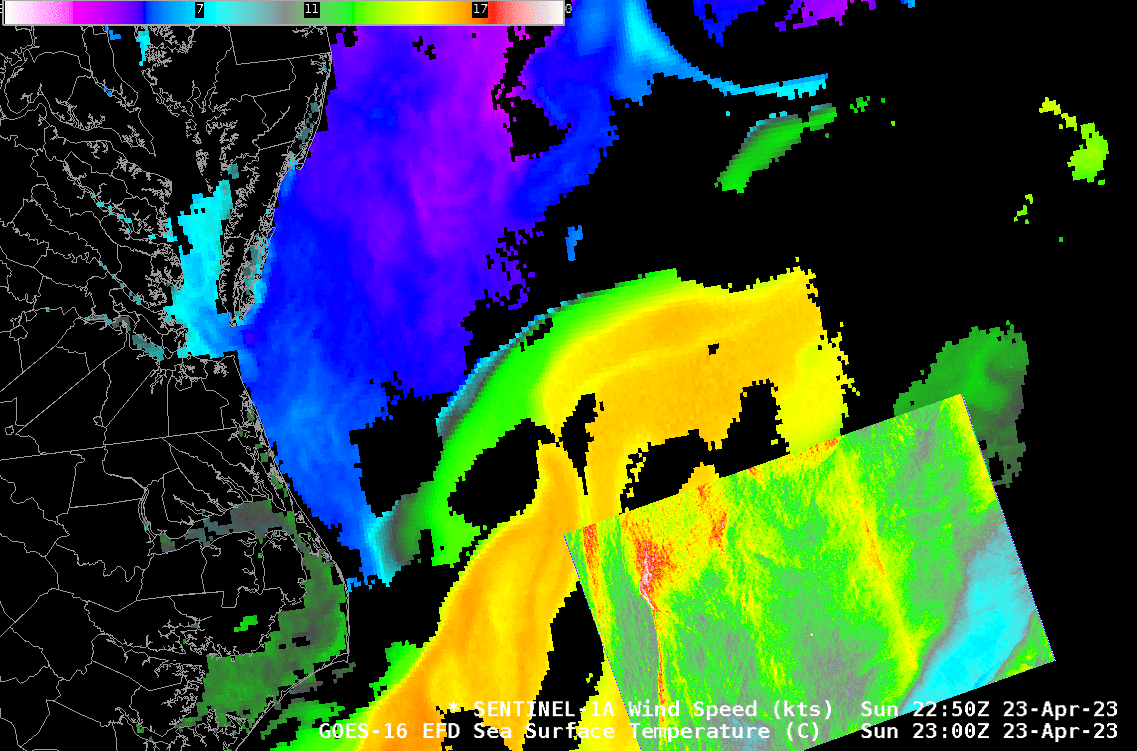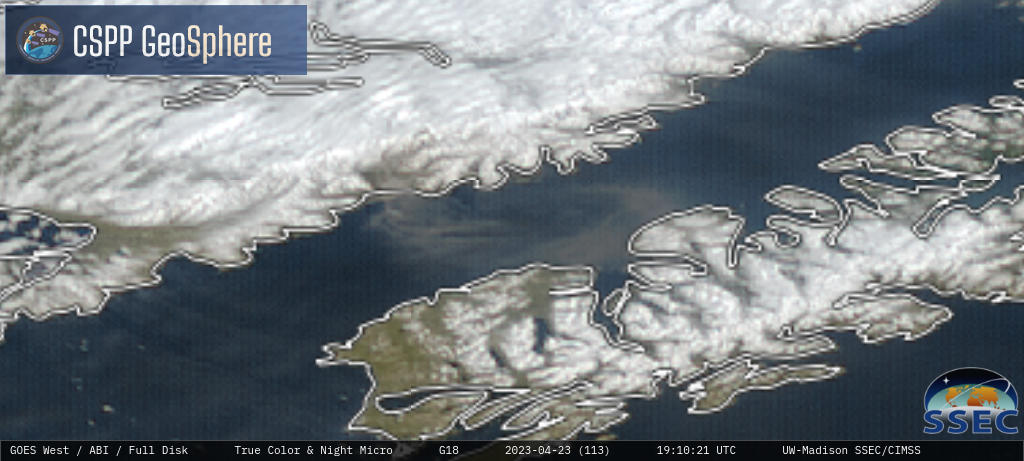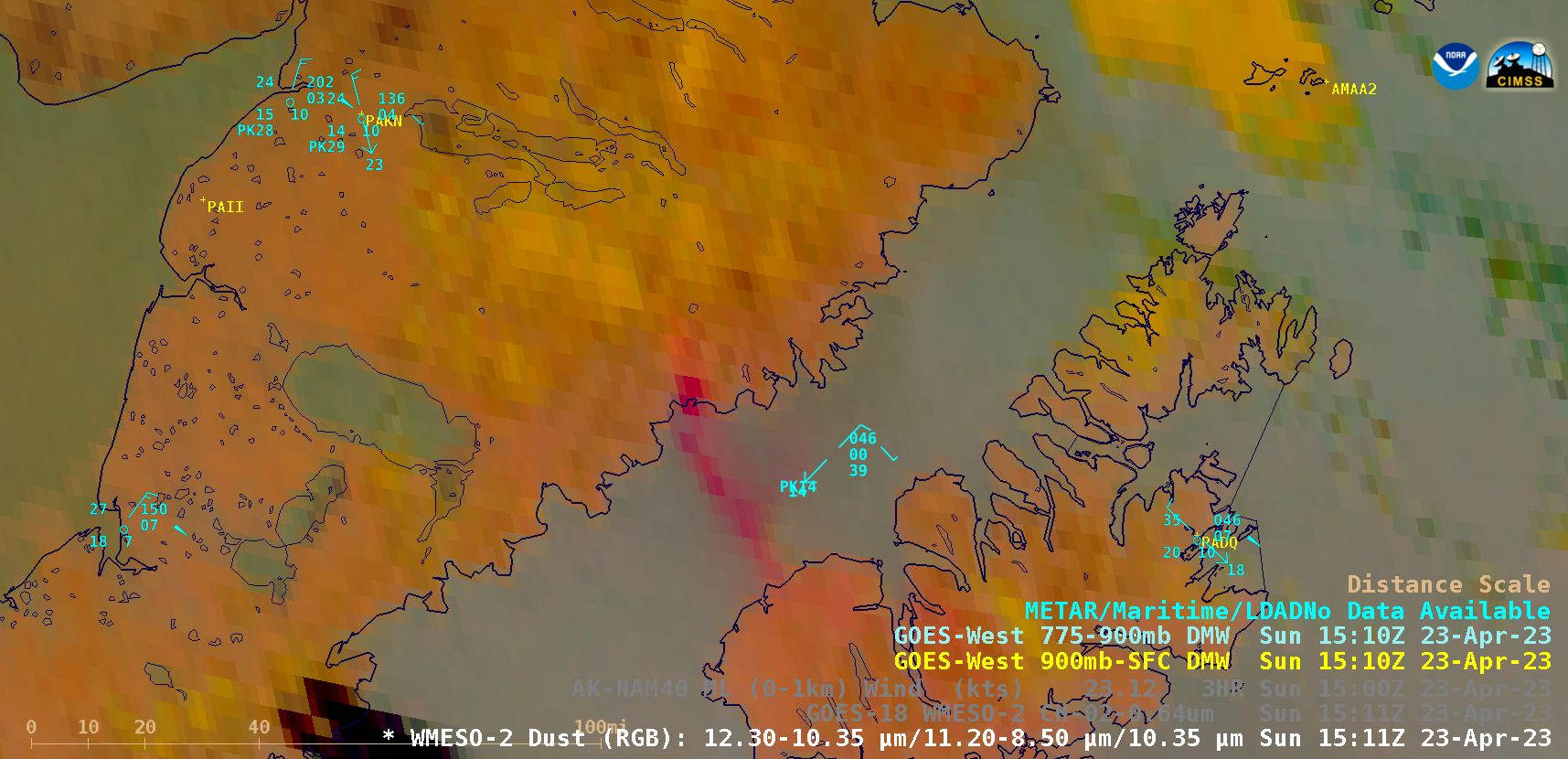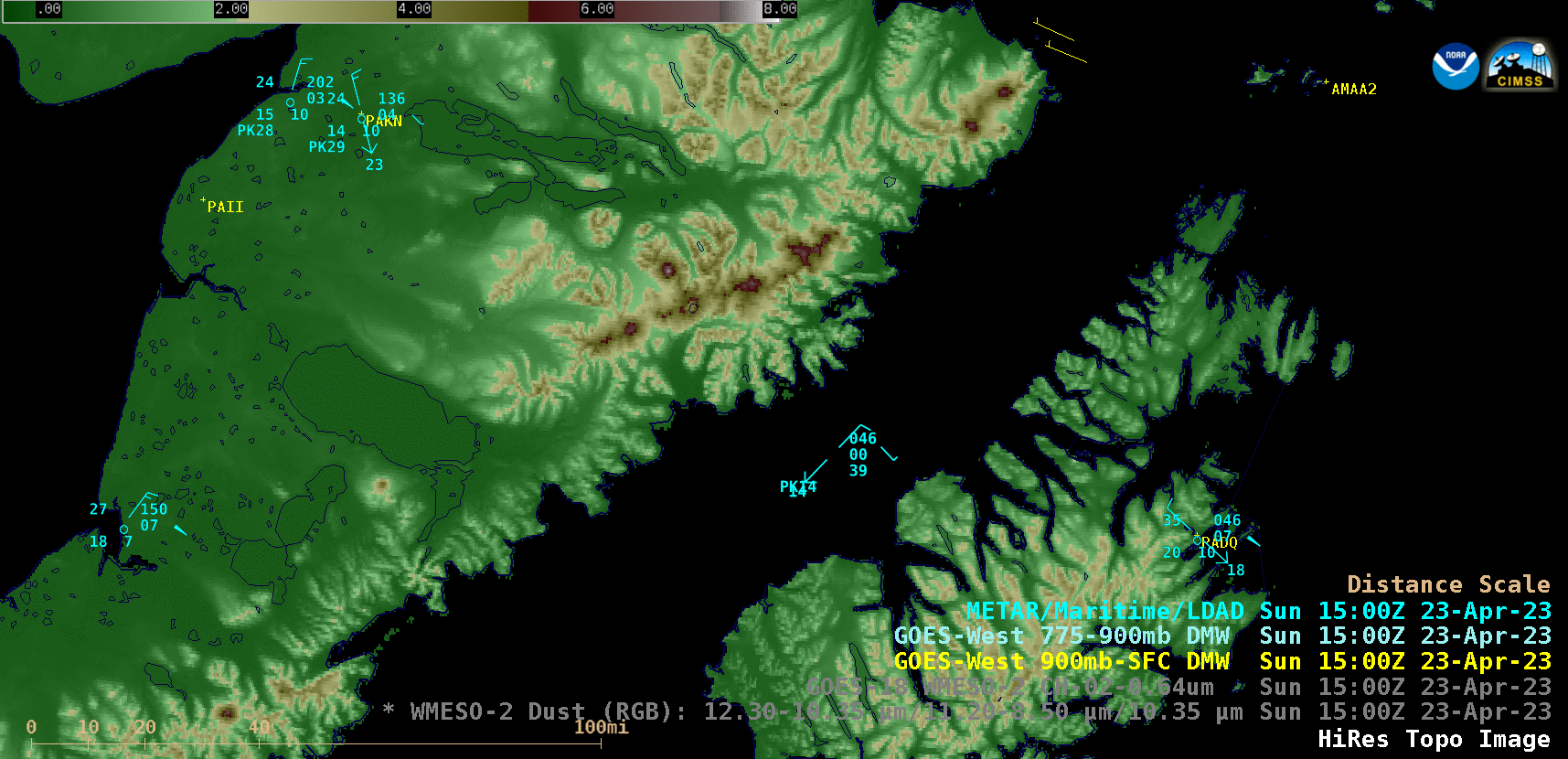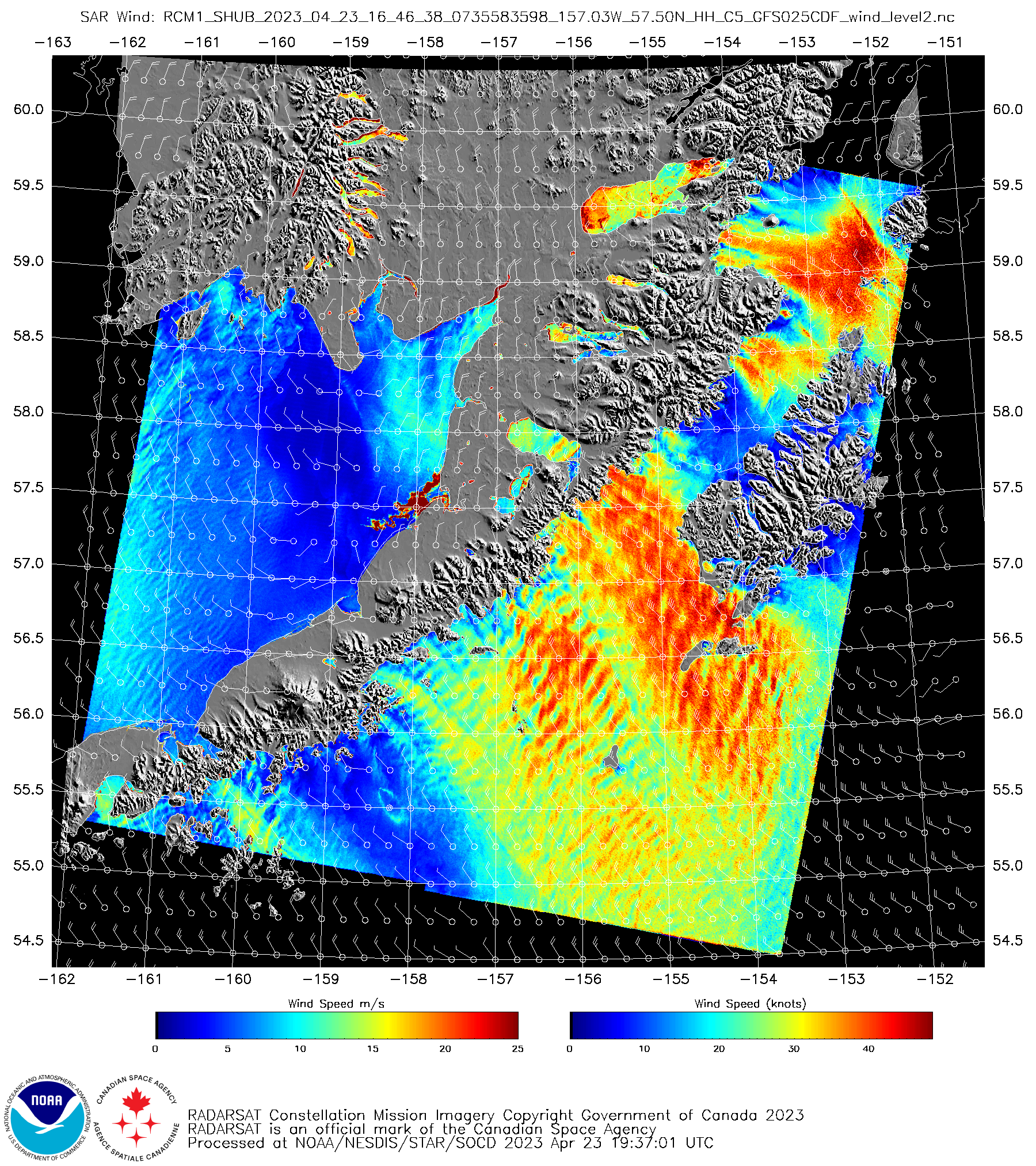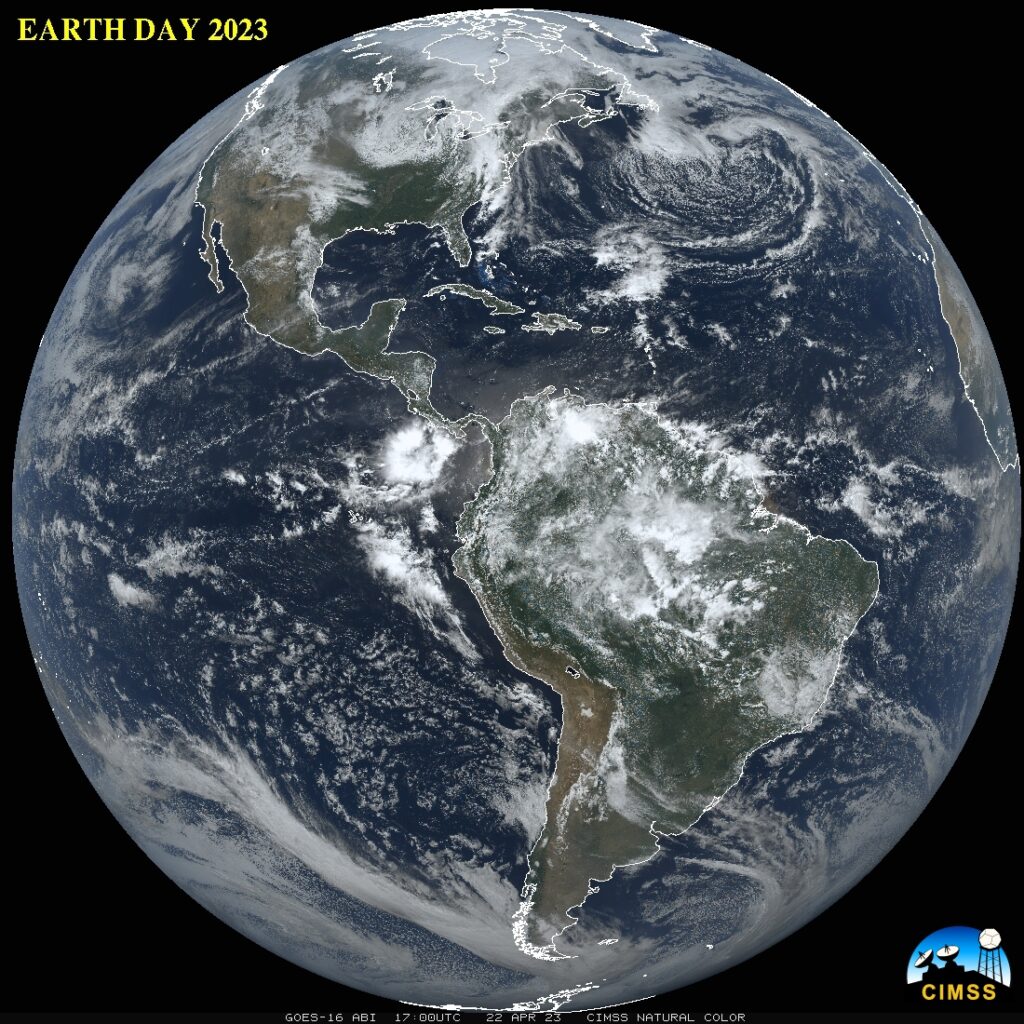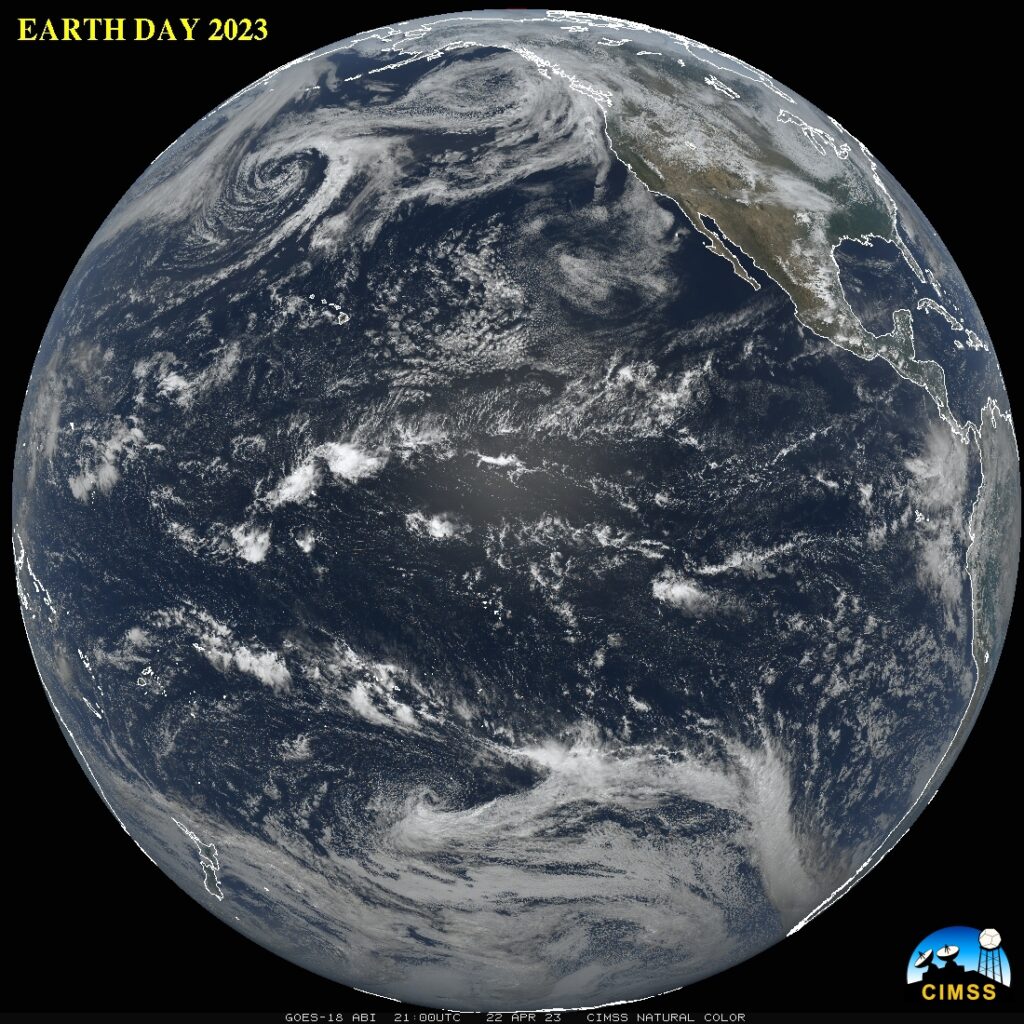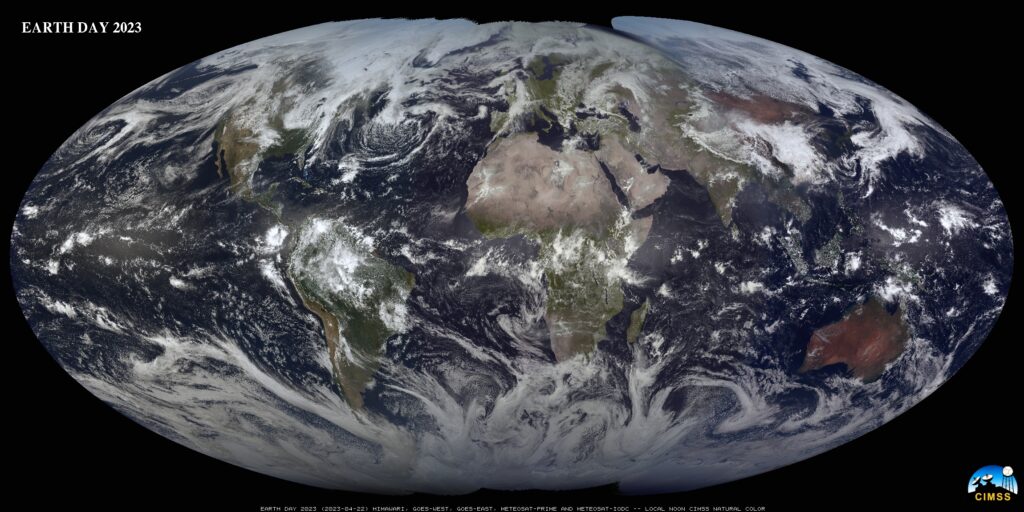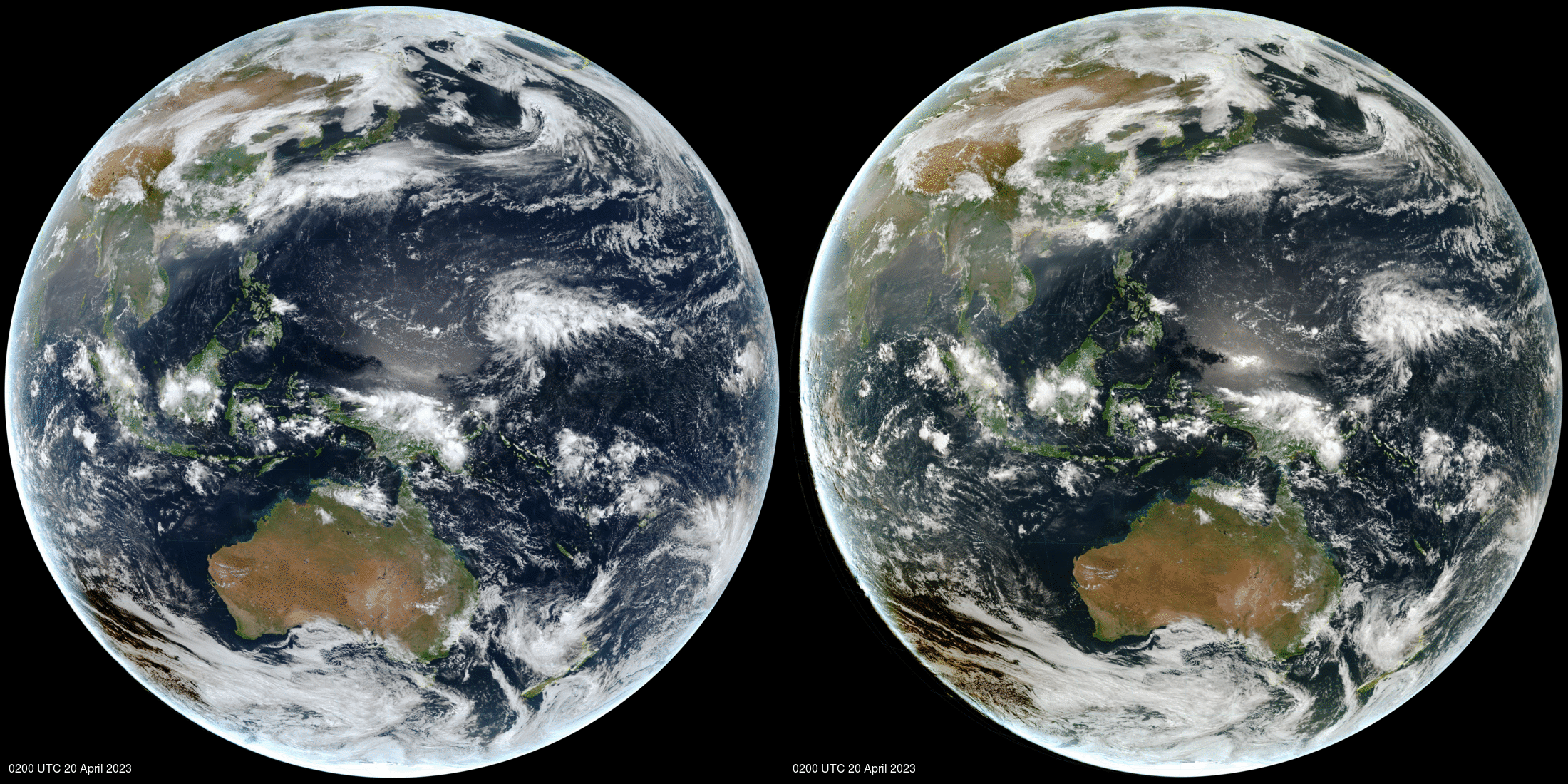
The recent Solar Eclipse that extended from the south Indian Ocean to the central north Pacific Ocean (Blog Post) traversed a region that is routinely monitored by different geostationary satellites — Himawari-9, GEOKOMPSAT-2A (GK2A) and FY-4A/FY-4B. Himawari-9 and GK2A have sub-satellite points on the Equator that are separated by only 12.5 degrees of Longitude (140.7oE for Himawari-9, 128.2oE for GK2A)! If you create full-disk imagery from the two satellites, stereoscopic views are achieved if one is able to cross their eyes and focus on the image in the middle. The Himawari-9 True-color imagery, above left, and the GK2A imagery, above right, were created using geo2grid (downloadable here). Geo2grid includes readers for both AHI HSD (Himawari Standard Data) data, and for AMI Level 1b data. If data are available (AHI HSD and AMI Le1b files are available at the SSEC Data Center, for example), the following two commands create images that lead to stereoscopy:
../geo2grid.sh -r ami_l1b -w geotiff -p true_color -f /path_to_AMIdata/2023_04_20_110/ami/le1b/fd*ge/*0440.nc../geo2grid.sh -r ahi_hsd -w geotiff -p true_color -f /path_to_AHIdata/ahi/2023/2023_04_20_110/0440/*FLDK*These two commands will create native-resolution (22000×22000!) True-Color images at 0440 UTC on 20 April 2023. The animation above shows data from 0200 through 0700 UTC. All images created images were resized and annotated, and placed side-by-side, with Himawari data to the left, and GK2A data to the right. The resultant animation can be viewed in three dimensions.
Thanks to Bodo Zeschke (ABoM) for noting that “easy” stereoscopic imagery could be created for this event. Thanks also to both KMA and JMA for the data.
View only this post Read Less





